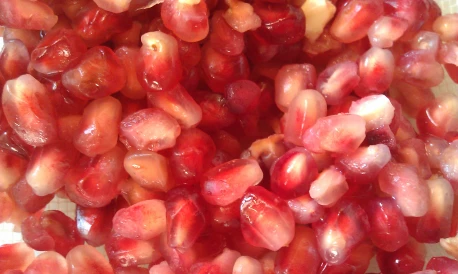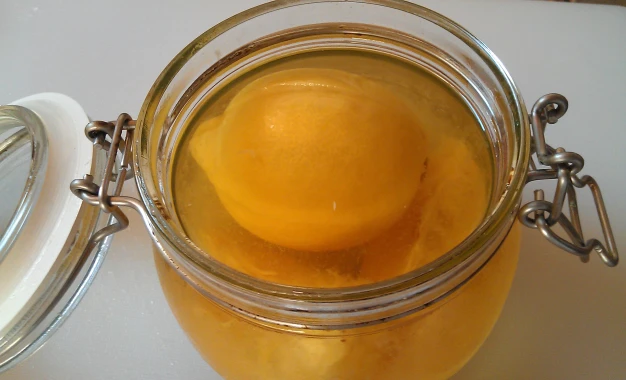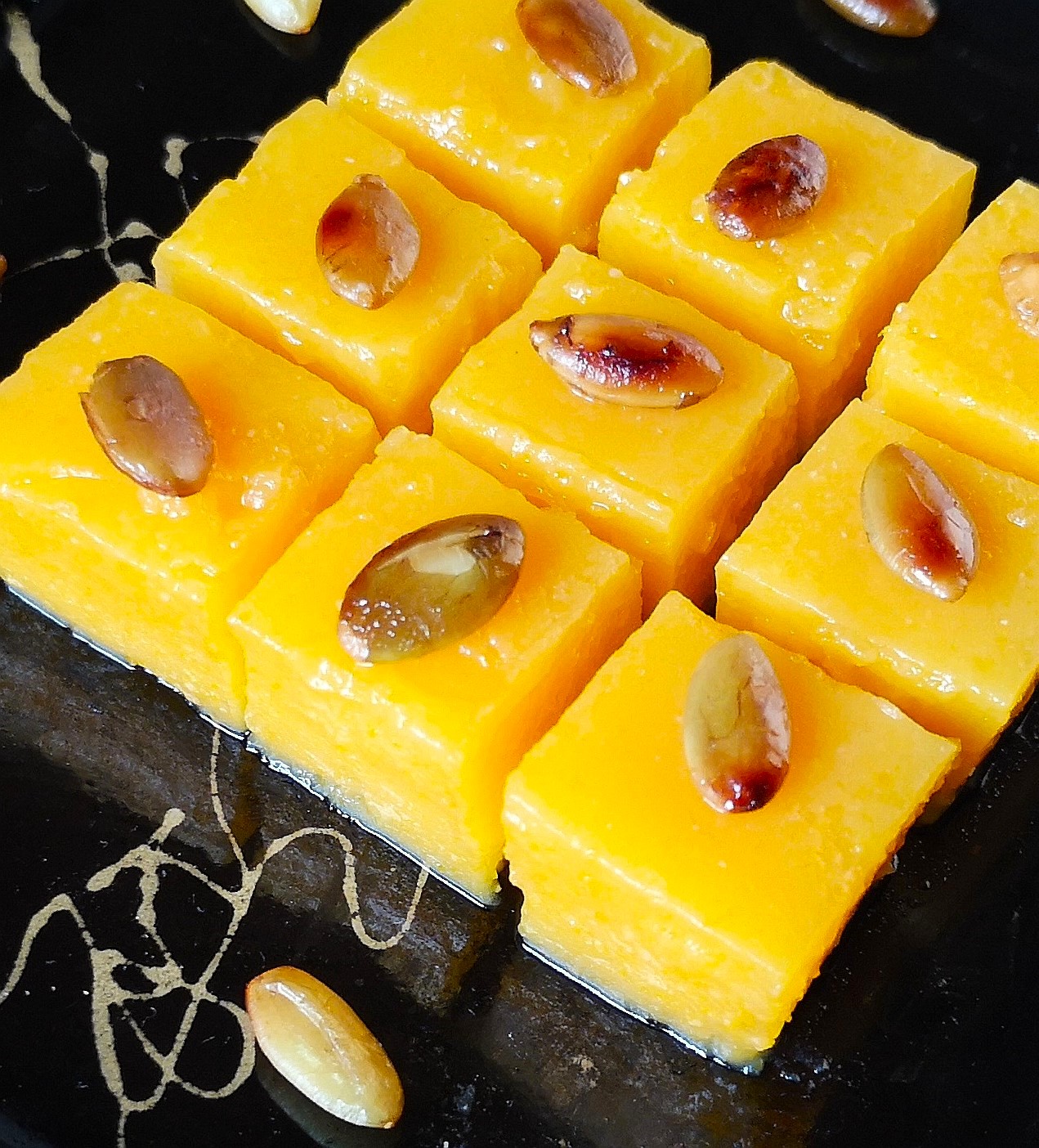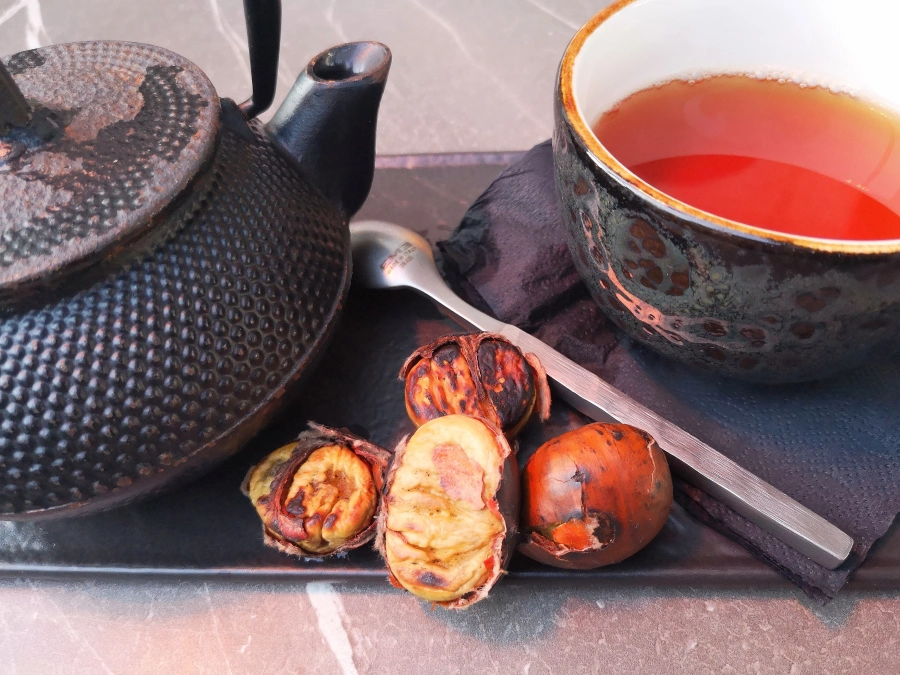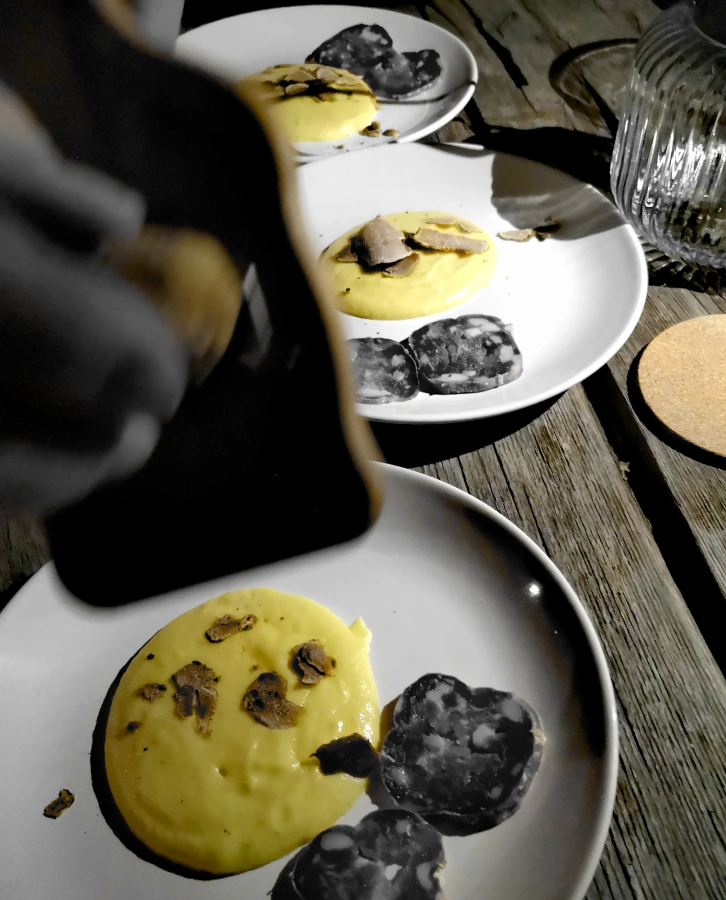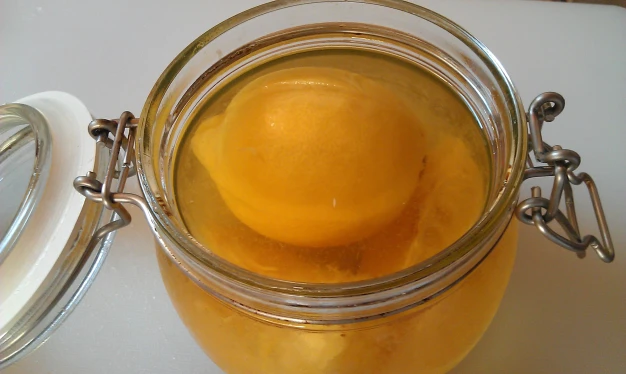
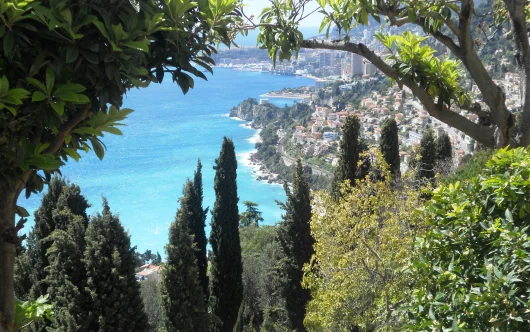

The pomegranate fruit is apparently an ancient symbol of fertility – too late for me! – but the juice used for thousands of years in Persian medicine, is rich in Vitamin C and boasts more antioxidants than red wine – which presumably means if you drink both, like me, you’re well set up for the winter! Actually I’ve now just discovered that there’s a pomegranate wine which sounds ideal…..I wonder if anyone has tried it ?
For this recipe I’m using home-salted or preserved lemons and pomegranate seeds combined in a pasta dish. Both fruits are used in Middle Eastern and North African cooking – salted lemons are used particularly in Moroccan tagines and pomegranate seeds in salads and stews as well as making a wonderful molasses. I have used Italy’s own ‘Cervia’ salt from the Adriatic coast, so highly prized that it was given the name “Salt of the Popes” – popes liked only the best! But any coarse salt is good to use.
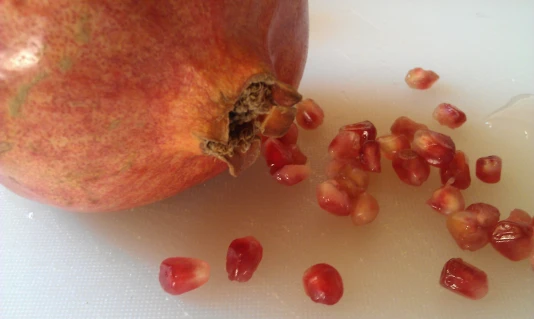
RECIPE
PRESERVED LEMON, BASIL & POMEGRANATE SEED LINGUINE For 4
Preparation time: about 8 minutes
Cooking time: 8 minutes
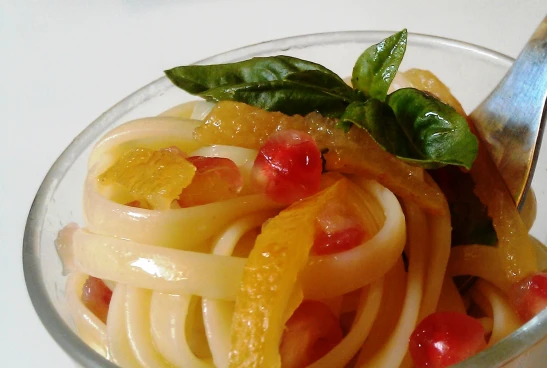
Ingredients
450g dried linguine
1 small or ½ large preserved lemon (bought in a jar from North African specialist stores or major supermarkets or see method below for making)
Seeds from 1 pomegranate (bought or see method below for seeding), plus a few extra for garnish
1 small bunch fresh basil, finely chopped plus extra basil leaves for garnish
4-5 Tbsp extra virgin olive oil
Method
Cook the linguine in boiling water for about 8 minutes (or follow instructions on the packet).
Meanwhile take a preserved lemon from the jar (using half if large), rinse well under running cold water, remove the pulp (squeezing as much juice as possible back into the jar) and finely slice.
When the linguine is cooked drain well, tip it back into the hot pan and add the lemon shreds, pomegranate seeds, basil and oil. Mix together well and serve immediately, topped with extra seeds and basil leaves.
Either eat the pasta on its own or you could match it with any of your favourite salmon recipes – they go beautifully together. It is also good cold the next day as a side salad – or perhaps mixed with any leftover salmon.
MAKING PRESERVED LEMONS
These are easy to do – I’m making 4 small individual lemon jars as I want to give the ones I’m not using as presents…..but you could use whatever size jar you like and press in as many lemons as you can. Just make sure you have an extra lemon per jar for the juice.
4 small sterilized jars (I’m using small kilner jars, but any well-sealable jar is good)
4 un-waxed lemons, organic if possible
4 lemons for juicing
4 Tbsp at least of coarse salt
Give the 4 un-waxed lemons a quick scrub. Put them into a bowl, cover with cold water and allow to soak for 3-4 days to soften. I changed the water every day to keep them fresh.
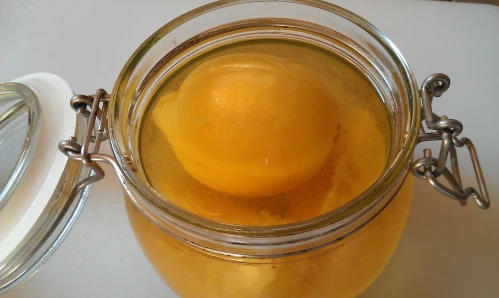

Place each lemon into a sterilized glass jar. Spoon about 1Tbsp of coarse salt into the centre of the lemon. Add the juice of a lemon and pour in enough boiling water to cover.
Tightly close the lid, place in a dark cupboard or pantry and leave to steep for about a month, giving them a shake every now and then. They’ll actually keep like this for a long time – years even. If you notice a slight white film on the top – as one of mine had – don’t worry just rinse it off before using. When it’s ready to use, take out the lemon and rinse under cold running water. Cut away the pulp, making sure you save as much juice as possible, and thinly slice the peel (you can also put the quarters into a stew, tagine or salad)

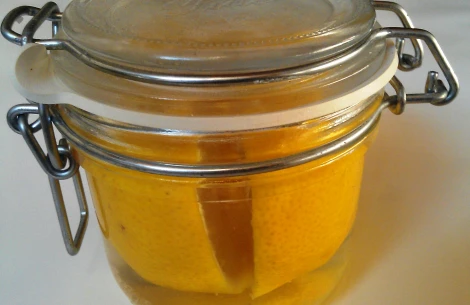
SEEDING POMEGRANATES
This is the method that works best for me and is quick and easy. First halve your pomegranate.


Take a sieve and place it over a bowl. Then take a wooden spoon and holding one of the pomegranate halves over the sieve, cut side down, squeeze and at the same time give several hard taps to the skin. Keep tapping and squeezing and the seeds will fall out. As you squeeze, the juice will also come out, drip through the sieve and collect in the bowl.
You’ll see that bits of white pomegranate rind will fall out with the seeds. Pick out and discard as many as you can and then lightly rinse the seeds. They are now ready to use.

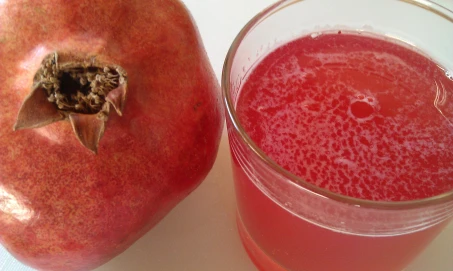
Here, roughly translated from Italian, is an old saying for a New Year resolution for 2014:
‘May we do at least as many good deeds this year as there are seeds in a pomegranate’.
